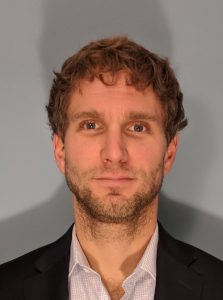To make the case for computer science and to develop an effective program, educators must understand the context and the roles people play.
First, a few clarifications:
- Computer science (CS) here refers to educational experiences where the primary objective is to develop computing skills and knowledge.
- Computational thinking (CT) refers to using computational practices in CS and in other disciplines. For example, using computer modeling and simulation in science and engineering courses.
In this post I’ll focus on the subjects and teachers with an especially strong affinity with CS / CT. These are people that might be already teaching CS, and most definitely should be incorporating CT. They include:
- Digital Literacy / technology integration
- STEM (math, science, engineering, and computer science).
- Career & technical education (e.g. IT, engineering, business)
Other teachers, for example social studies and humanities teachers, are less likely to teach CS – it’s certainly possible, but would be a more significant departure from their regular teaching duties than the above. However, there are ample opportunities to incorporate CT practices.
Digital literacy, educational technology, digital citizenship.
These areas, in general, are about the safe and effective use of technology for a variety of uses. Business teachers will focus on using technology for business purposes. Technology integration specialists or library / media specialists tend to support the integration of technology across the curriculum. While these areas are not strictly CS, these educators are excellent candidates to become CS teachers. They are also great candidates to support the integration of CT.
Note: A comparison between these areas and computer science is available at the K12 CS Framework. (K12CS, Defining Computer Science.)
STEM education.
In a nutshell: science is about systematically exploring phenomena; engineering is about designing and developing technologies. Mathematics and computing are tools that are used to do science and engineering.
Computer science is fundamentally mathematical, rooted in formal logic. Math educators are great candidates to teach CS, but it’s important to consider the primary objective. CS can have a strong mathematical focus, for example, when you are working with data and analysis.
Computer science is a science – it is the study of the principles and use of computers. CS is also an engineering discipline – it includes the design and development of computer hardware and software. It’s important to remember that using computing tools to advance other science and engineering disciplines is not exactly CS – this is computational science and engineering, which is very much in the realm of CT.
I think it’s important to remember that teaching CS and incorporating CT into other subjects are different things, albeit both very important.
Note: The K12 CS Framework also includes great information on computational thinking, including a venn diagram that connects CS / CT practices with math, science, and engineering practices. (K12 CS, Computational Thinking).
Career & Technical Education
Career & Technical Education (CTE) is an umbrella term that includes a number of career clusters (occupation groups) and pathways (leading to specific occupations). CTE programs are generally two-year programs that students may take towards the end of K-12.
The Information Technology (IT) cluster in CTE includes the following pathways:
- Network Systems Pathway
- Information Support & Services Pathway
- Web & Digital Communications Pathway
- Programming & Software Development Pathway
While the IT pathways are clearly closely related to CS, there are a few important points worth making. CTE programs are upper-HS level, and focus on specific skills for a certain career pathway. This is different from a K-12 CS program, which focuses on core CS skills and knowledge that are applicable in many careers not only in IT, but also in other clusters such as engineering, business, etc.
The bottom line is that students should learn fundamental CS skills and knowledge earlier in K-12 so that they can apply them to whatever pathway they pursue, whether or not they participate in a CTE program.
For more information about career clusters, please visit: Advance CTE, Career Clusters.
The social sciences and humanities
While I focused on strong affinity groups here, I don’t want to entirely leave out other groups. Like other sciences, the social sciences are increasingly data-driven and rely on computational methods. The humanities are a great place to explore the impacts of technology on society. Arts educators employ practices that are related to engineering design and development processes. The discussion could go on into other disciplines.
Aside from systemic constraints, the degree of CT incorporation into these areas is limited only by the knowledge and imagination of the educators, and can be strongly aided by effective collaboration.
So… where does CS / CT go?!?
Educators need to determine how to build a CS program that fits their need. Schools need a strong CS program, and they also need to incorporate CT across the curriculum. There is no magic bullet, but any solution starts with a solid understanding of the context and possibilities, and a concrete plan to move forward.

David Benedetto
